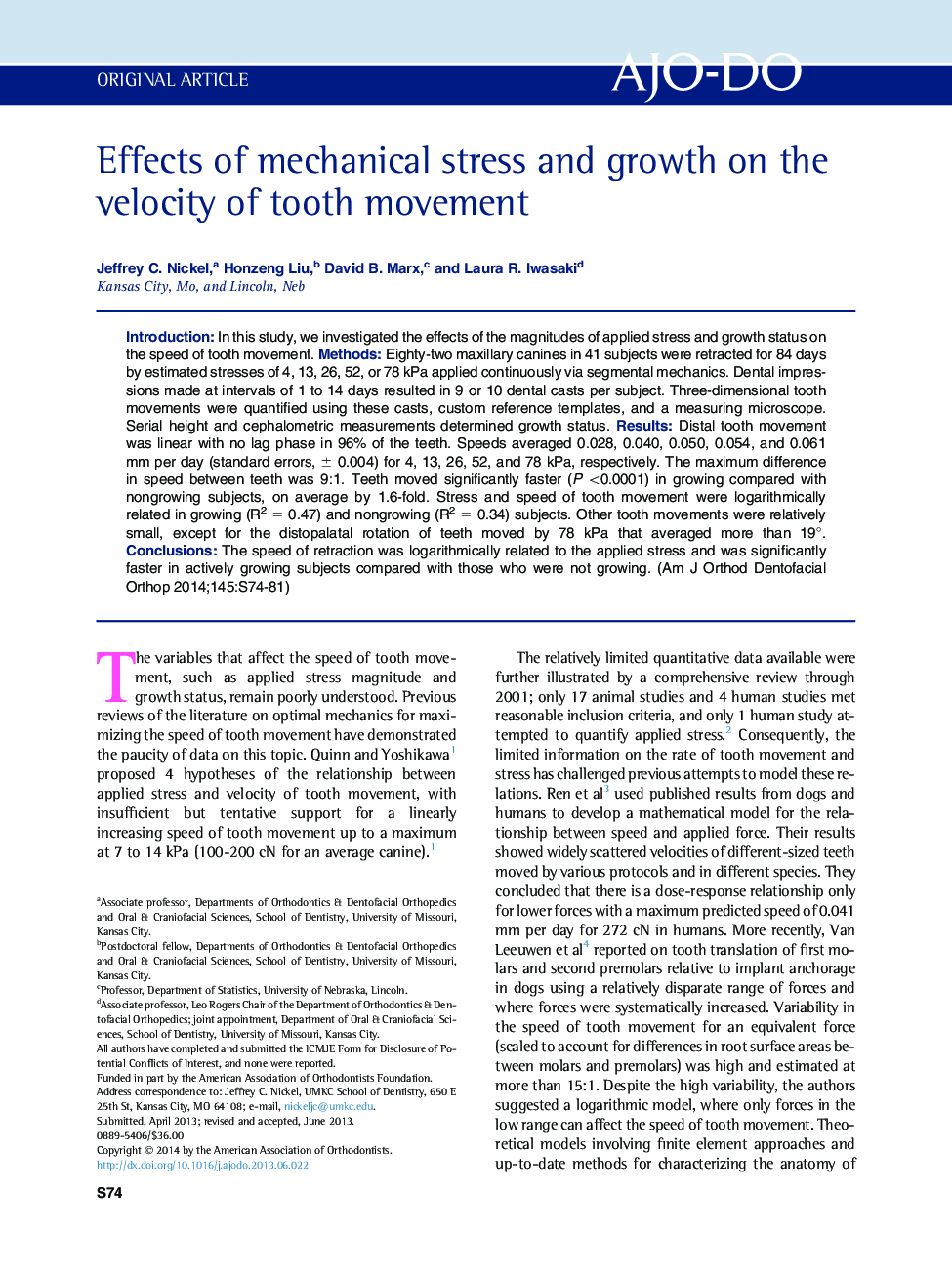| Article ID | Journal | Published Year | Pages | File Type |
|---|---|---|---|---|
| 3115919 | American Journal of Orthodontics and Dentofacial Orthopedics | 2014 | 8 Pages |
IntroductionIn this study, we investigated the effects of the magnitudes of applied stress and growth status on the speed of tooth movement.MethodsEighty-two maxillary canines in 41 subjects were retracted for 84 days by estimated stresses of 4, 13, 26, 52, or 78 kPa applied continuously via segmental mechanics. Dental impressions made at intervals of 1 to 14 days resulted in 9 or 10 dental casts per subject. Three-dimensional tooth movements were quantified using these casts, custom reference templates, and a measuring microscope. Serial height and cephalometric measurements determined growth status.ResultsDistal tooth movement was linear with no lag phase in 96% of the teeth. Speeds averaged 0.028, 0.040, 0.050, 0.054, and 0.061 mm per day (standard errors, ± 0.004) for 4, 13, 26, 52, and 78 kPa, respectively. The maximum difference in speed between teeth was 9:1. Teeth moved significantly faster (P <0.0001) in growing compared with nongrowing subjects, on average by 1.6-fold. Stress and speed of tooth movement were logarithmically related in growing (R2 = 0.47) and nongrowing (R2 = 0.34) subjects. Other tooth movements were relatively small, except for the distopalatal rotation of teeth moved by 78 kPa that averaged more than 19°.ConclusionsThe speed of retraction was logarithmically related to the applied stress and was significantly faster in actively growing subjects compared with those who were not growing.
